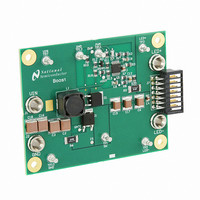LM3429BSTEVAL/NOPB National Semiconductor, LM3429BSTEVAL/NOPB Datasheet - Page 11

LM3429BSTEVAL/NOPB
Manufacturer Part Number
LM3429BSTEVAL/NOPB
Description
BOARD EVAL FOR BOOST LM3429
Manufacturer
National Semiconductor
Series
PowerWise®r
Specifications of LM3429BSTEVAL/NOPB
Current - Output / Channel
1A
Outputs And Type
1, Non-Isolated
Features
Dimmable
Voltage - Input
10 ~ 26 V
Utilized Ic / Part
LM3429
Core Chip
LM3429
Topology
Buck-Boost
No. Of Outputs
1
Dimming Control Type
PWM / Analog
Development Tool Type
Hardware - Eval/Demo Board
Mcu Supported Families
LM3429 Family
Msl
MSL 1 - Unlimited
Lead Free Status / RoHS Status
Lead free by exemption / RoHS compliant by exemption
Voltage - Output
-
Other names
*LM3429BSTEVAL
*LM3429BSTEVAL/NOPB
LM3429BSTEVAL
*LM3429BSTEVAL/NOPB
LM3429BSTEVAL
Available stocks
Company
Part Number
Manufacturer
Quantity
Price
Company:
Part Number:
LM3429BSTEVAL/NOPB
Manufacturer:
National Semiconductor
Quantity:
135
CONTROL LOOP COMPENSATION
The LM3429 control loop is modeled like any current mode
controller. Using a first order approximation, the uncompen-
sated loop can be modeled as a single pole created by the
output capacitor and, in the boost and buck-boost topologies,
a right half plane zero created by the inductor, where both
have a dependence on the LED string dynamic resistance.
There is also a high frequency pole in the model, however it
is above the switching frequency and plays no part in the
compensation design process therefore it will be neglected.
Since ceramic capacitance is recommended for use with LED
drivers due to long lifetimes and high ripple current rating, the
ESR of the output capacitor can also be neglected in the loop
analysis. Finally, there is a DC gain of the uncompensated
loop which is dependent on internal controller gains and the
external sensing network.
A buck-boost regulator will be used as an example case. See
the Design Guide section for compensation of all topologies.
The uncompensated loop gain for a buck-boost regulator is
given by the following equation:
Where the uncompensated DC loop gain of the system is de-
scribed as:
And the output pole (ω
P1
) is approximated:
FIGURE 8. Compensation Circuitry
11
And the right half plane zero (ω
Figure 7
scenario when the RHP zero is below the output pole. This
occurs at high duty cycles when the regulator is trying to boost
the output voltage significantly. The RHP zero adds 20dB/
decade of gain while loosing 45°/decade of phase which
places the crossover frequency (when the gain is zero dB)
extremely high because the gain only starts falling again due
to the high frequency pole (not modeled or shown in figure).
The phase will be below -180° at the crossover frequency
which means there is no phase margin (180° + phase at
crossover frequency) causing system instability. Even if the
output pole is below the RHP zero, the phase will still reach
-180° before the crossover frequency in most cases yielding
instability.
FIGURE 7. Uncompensated Loop Gain Frequency
shows the uncompensated loop gain in a worst-case
Response
Z1
) is:
300944a3
www.national.com
300944a7











